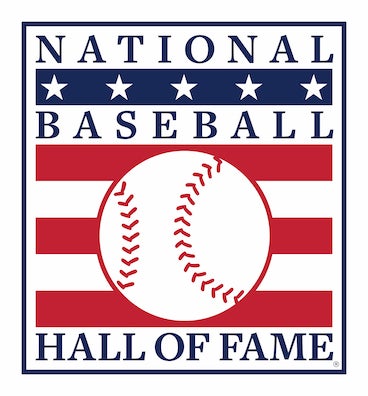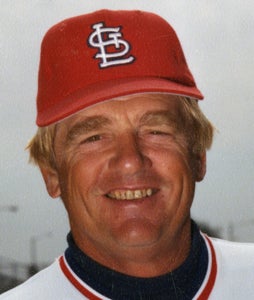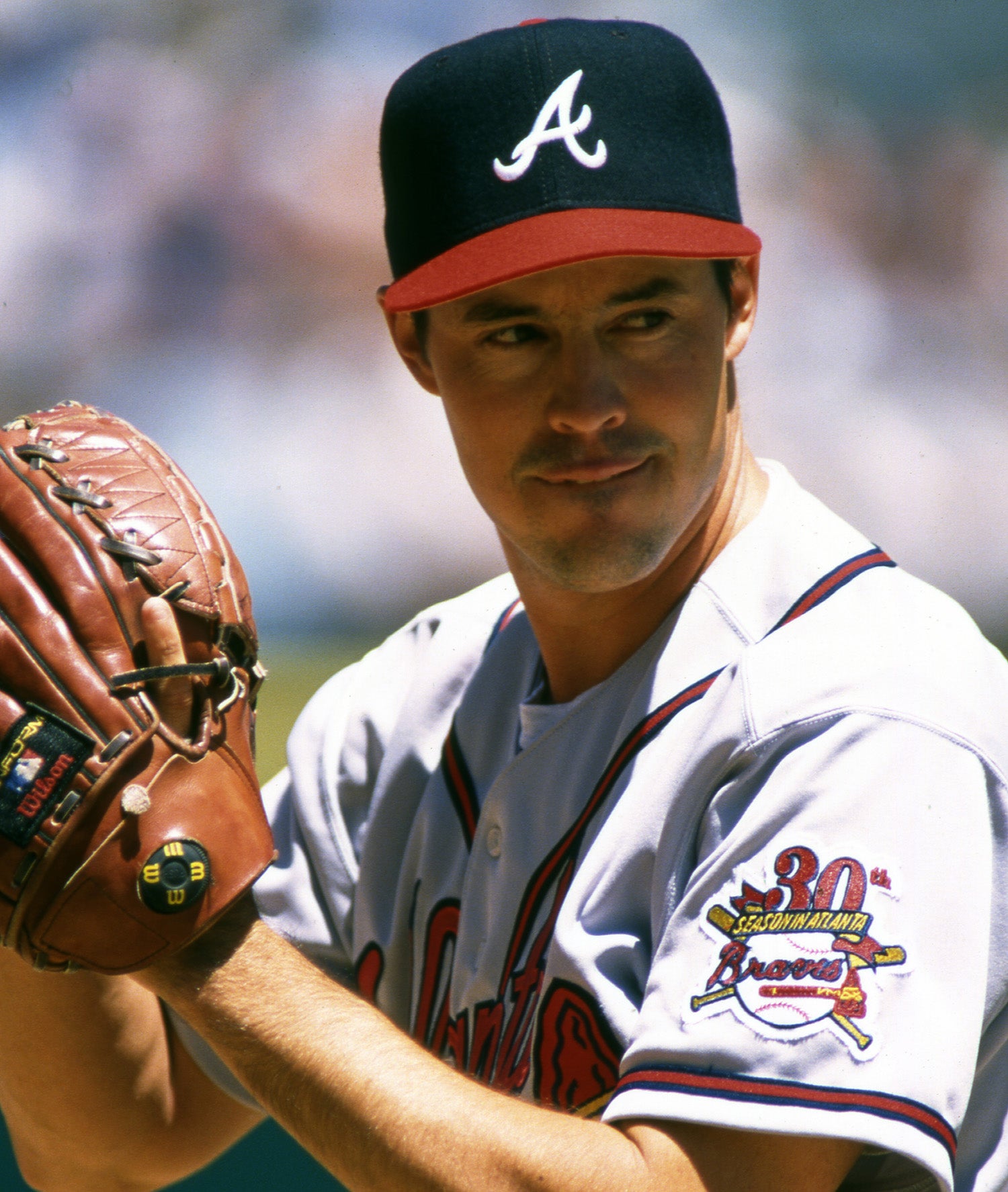- Home
- Our Stories
- #CardCorner: 1992 Upper Deck Ken Hill
#CardCorner: 1992 Upper Deck Ken Hill
Ken Hill was the ace of the best team in baseball when the 1994 season finished. But Hill and the Montreal Expos never got a chance to play for a World Series championship due to the labor dispute that ended the season in August.
It might be one of the game’s greatest “what if” questions. And yet Hill’s career was anything but unfulfilled.
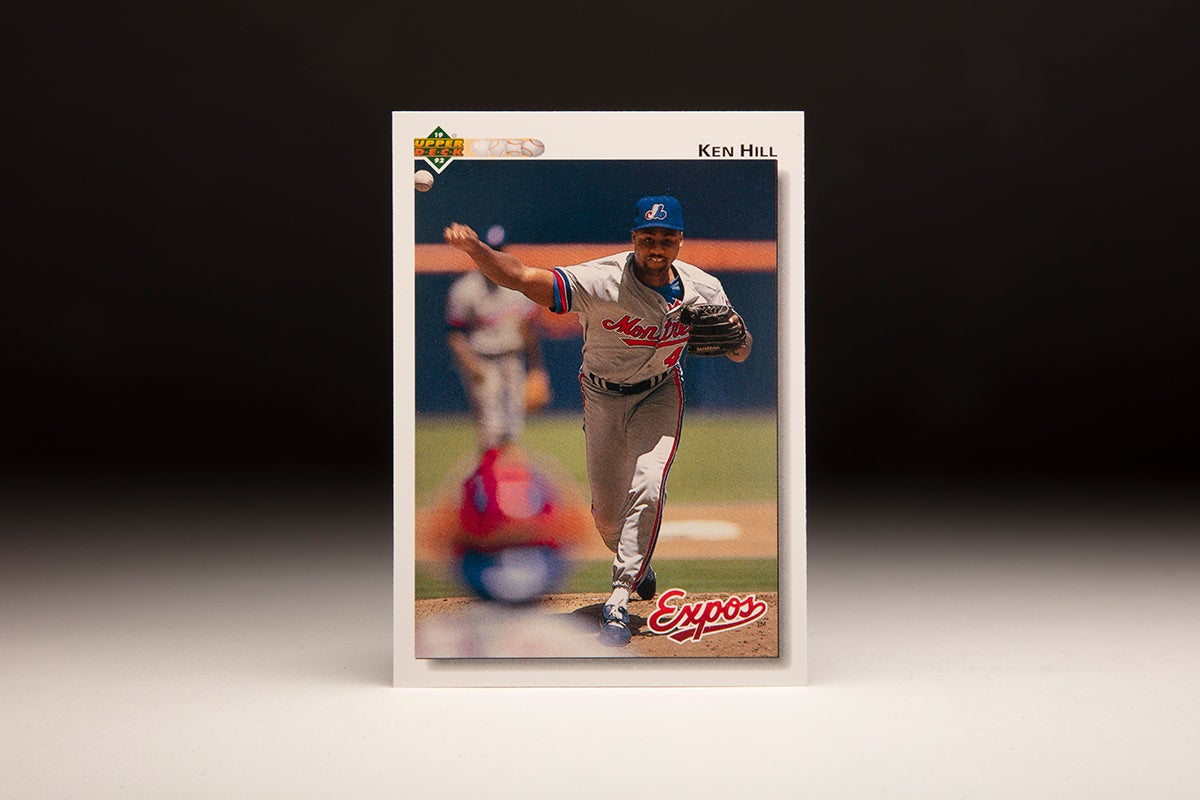
Born Dec. 14, 1965, in Lynn, Mass., Hill grew up in an athletic family with five brothers and two sisters. All six boys excelled athletically.
“The boys would get out of the house early and stay out late, playing ball all day,” Hill’s mother, Rosemary, told the Daily Evening Item of Lynn in 1989. “They loved playing ball. And they played just about every sport.”
Hill began playing organized baseball at the age of six and was primarily an infielder. He was named the Northeastern Conference Most Valuable Player in 1983 after leading Lynn Classical High School to the league championship as a senior when he hit .419 and was 5-1 as a pitcher.
“He grew like three inches between his junior and senior year,” Classical High School baseball coach Dick Maag told the Daily Evening Item. “But he hadn’t filled out. He was a very good second baseman who pitched once in a while. He didn’t say much but he’d always have a smile. He loved the game.”
Undrafted out of high school, Hill – who would grow to be 6-foot-4 but was still well under 175 pounds in high school – enrolled at North Adams State College in the northwest corner of Massachusetts, not far from the New York State and Vermont borders. Now known as the Massachusetts College of Liberal Arts, North Adams State played at the small school level of the NCAA.
Head baseball coach Joe Zavattaro, however, knew that Hill had big league potential.
“Ken had the basic start,” Zavattaro told the Daily Evening Item. “We just tried to fine-tune him in certain areas. He had natural rhythm and delivery and he had the goal in mind to play in the majors.”
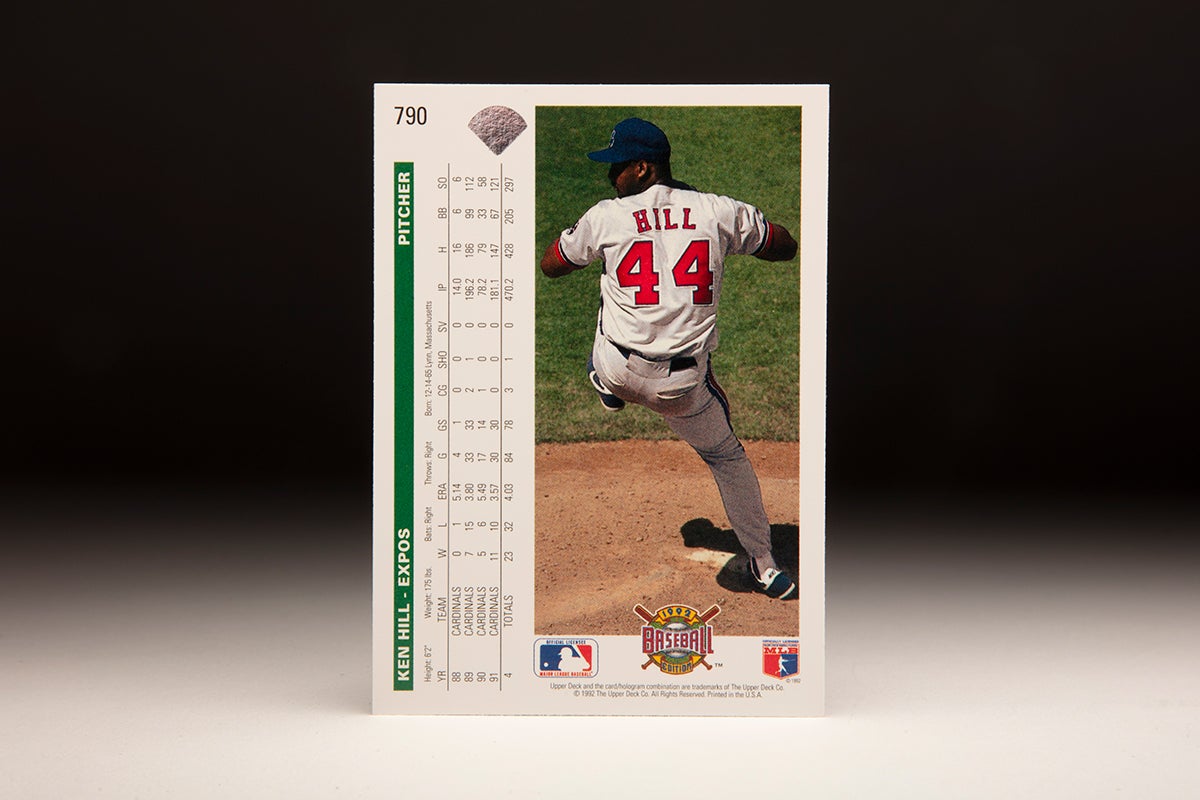
After one season at North Adams State, Hill signed with the Tigers as an amateur free agent on Feb. 14, 1985, after Detroit scouts were alerted to Hill by his former American Legion baseball coach, Dick Champa.
The Tigers sent Hill to Class A Gastonia of the South Atlantic League in 1985, where Hill went 3-6 with a 4.96 ERA in 69 innings while walking more batters (57) than he struck out (48). But he fared much better in 1986 when returning at Gastonia, going 9-5 with a 2.79 ERA. Then after one start at Double-A Glens Falls, the Tigers sent Hill and a player to be named later (who turned out to be Mike Laga) to the Cardinals in exchange for catcher Mike Heath on Aug. 10.
A little more than two years later, Hill would be in the big leagues.
He started three games at Double-A Arkansas at the end of the 1986 season, getting his feet wet in the Cardinals’ organization. He worked as both a starter and reliever for Class A St. Petersburg and Arkansas in 1987 with little success, going a combined 4-8 with a 4.75 ERA. But he cut his walks down to 47 while still striking out 81 over 94.2 innings. Then in the Instructional League following the season, Hill began to turn heads with his fastball/slider combination.
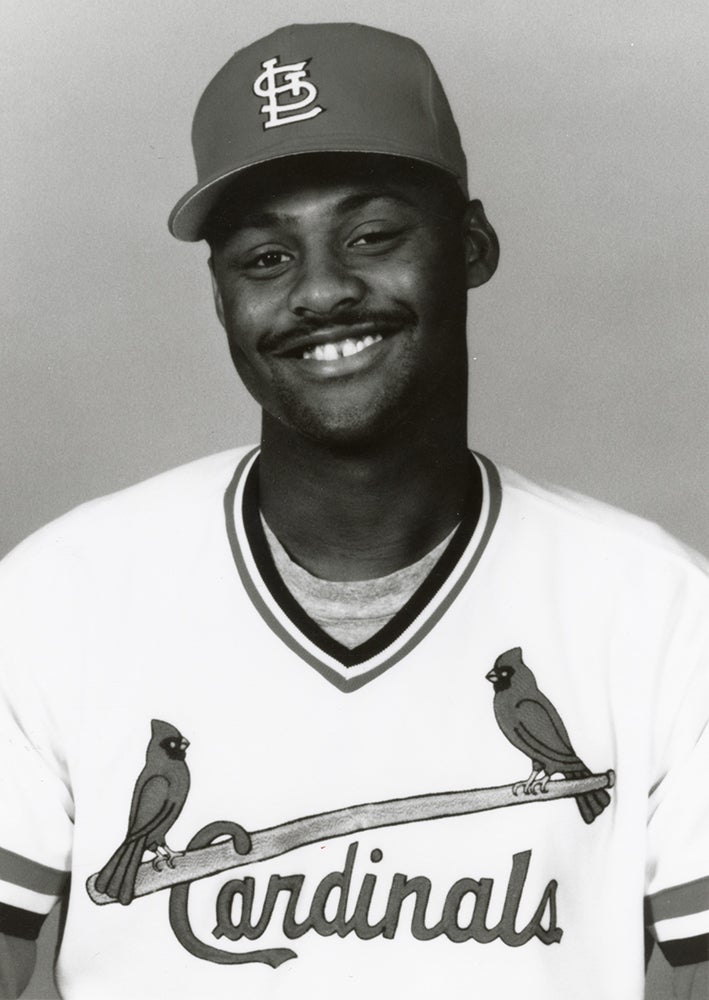
Invited to the Cardinals’ Spring Training camp in 1988, Hill suffered a rib injury but still remained in camp until the team’s final cuts. He was sent back to Arkansas, where he went 9-9 with a 4.92 ERA before he was called up to St. Louis, debuting on Sept. 3 against the Astros. He made four appearances that month and was sent to Triple-A Louisville to begin the 1989 season. But a rash of injuries to the Cardinals’ rotation brought Hill back to St. Louis before April was over, and Hill put together 24.2 consecutive scoreless innings in late April/early May to solidify his spot on the team.
The rest of the season was not as smooth – Hill led the NL in both losses (15) and walks (99) that year – but his 3.80 ERA over 196.2 innings was more than respectable.
“He throws hard but he’s been wild,” Cardinals manager Whitey Herzog told the Daily Evening Item. “He learned a forkball last year, and when it’s working, it really sets up his fastball.”
But after the Cardinals revamped their rotation for 1990 by bringing back former staff ace John Tudor and signing Bryn Smith, Hill was moved to the bullpen. He had three ineffective outings before being sent back to Louisville, where he was 6-1 with a 1.79 ERA before being recalled in July. He remained in the St. Louis rotation for the rest of the season, finishing 5-6 with a 5.49 ERA.
Then in 1991, Hill firmly established himself by going 11-10 with a 3.57 ERA over 30 starts, limiting opposing batters to 7.296 hits per nine innings – the fourth-best mark in the National League. But with the Cardinals looking for offense, Hill was sent to the Expos on Nov. 25, 1991, in a one-for-one deal for first baseman Andrés Galarraga.
“I never expected it,” Hill told the Associated Press. “But I’ve been traded before and I guess I’ll just have to start over again.”
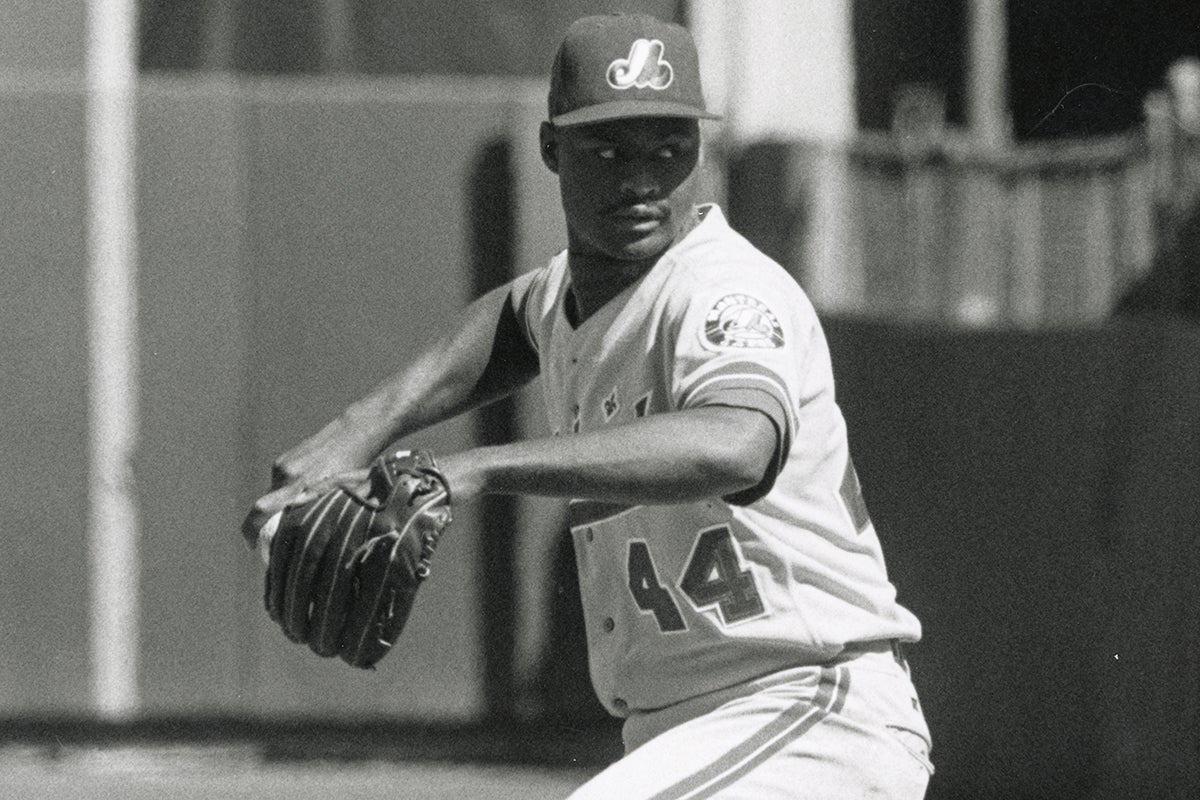
Hill would start over with a talented young team that was stockpiling young arms like his.
“We are obtaining a solid, accomplished major league starter,” Expos general manager Dan Duquette told the AP. “Hill is an emerging talent who ranked with the best in baseball as one of the toughest pitchers to hit last year.”
Hill debuted for Montreal with a four-hit shutout against the Mets on April 10, 1992, and was 12-4 with a 2.80 ERA through July on the strength of a seven-game winning streak. Hill finished the season 16-9 with a 2.68 ERA, striking out 150 batters over 218 innings.
The Expos finished with 87 wins after the team gelled under new manager Felipe Alou, who replaced Tom Runnells early in the season.
Hill and the Expos avoided arbitration and agreed to a one-year deal worth $2 million for 1993. He won four of his first five starts, earning National League Pitcher of the Month honors for April, and was 6-0 with a 2.42 ERA through May. A groin injury hounded him for much of the rest of the season but he still finished 9-7 with a 3.23 ERA over 28 starts.
“He’s one of the best right-handers in the major leagues,” Alou told the St. Louis Post-Dispatch. “I’m not saying he’s the best. He’s among the 10 best to me.
“He has three real good pitches: Fastball, slider and a split-fingered fastball. He has strength, power and he’ll give you six, seven or eight innings.”
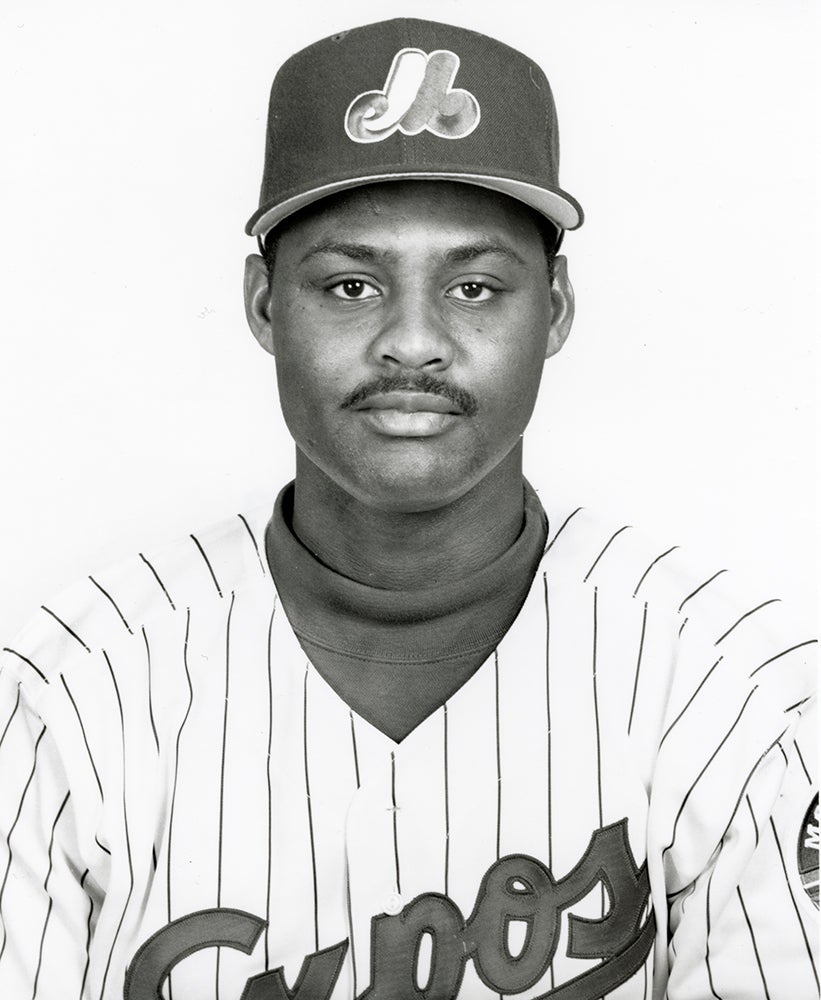
Entering the 1994 season, media outlets were referring to Hill as “the best nine-win pitcher in the game.” He had taken over as staff ace after Dennis Martínez left for Cleveland via free agency. Now, Hill was the veteran in a young rotation that included Pedro Martínez – acquired by Montreal from the Dodgers before the 1994 season – and Kirk Rueter.
Hill recorded a decision in his first 11 starts in 1994 and was 11-3 with a 3.23 ERA through June. He earned his first All-Star Game selection and was the second pitcher used in the game by NL manager Jim Fregosi, working two scoreless innings in relief of Greg Maddux in a game the National League won 8-7 in 10 innings.
The Expos lost four straight games coming out of the All-Star break then caught fire, winning 14 of 15 to stand 68-38 and stand five-and-a-half games in front of the second-place Braves in the NL East. After a loss to the Cardinals, Montreal won six straight, including a 6-4 victory over the Phillies on Aug. 7 where Hill improved to 16-5.
A loss to the Pirates on Aug. 11 dropped Montreal to 74-40. The next day, with Hill scheduled to make his 24th start of the season, the strike began. It would wipe out the rest of the season, costing the Expos what would be their best chance to win a National League pennant.
Hill finished a distant second to Maddux in the NL Cy Young Award vote as Maddux received all 28 first-place votes. Both Hill and Maddux won 16 games but Maddux led the league in ERA (1.56), complete games (10), shutouts (3) and innings pitched (202). Hill finished with a 3.32 ERA in 154.2 innings and placed 12th in the NL Most Valuable Player voting.
With the labor impasse dragging on, the MLB owners implemented a salary cap structure that made Hill a restricted free agent who was free to negotiate with all 28 teams. He agreed to an offer sheet with the Florida Marlins but was unable to sign when the union put a moratorium on contracts. The National Labor Relations Board soon ruled the salary cap structure to be unfair and the old work rules were eventually put back in place.
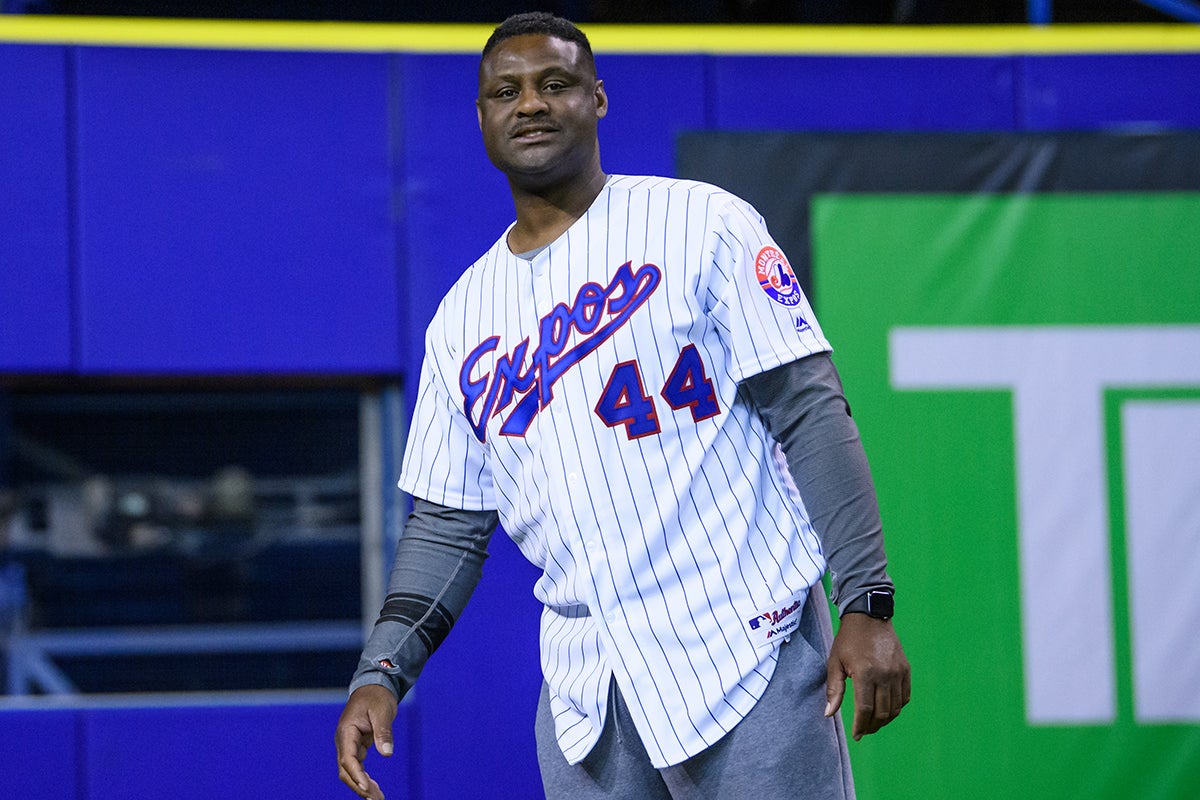
Rather than see Hill earn another salary increase through the arbitration system, the Expos traded Hill to the Cardinals on April 5, 1995, in exchange for Kirk Bullinger, Bryan Eversgerd and DaRond Stovall.
The deal was part of a purge that also saw Marquis Grissom, Larry Walker and John Wetteland leave Montreal, decimating what had been a championship core.
“The economics of the current system is the reason we’re making the changes,” Expos general manager Kevin Malone told the AP. “These deals are financially motivated.”
The Expos’ loss became the Cardinals’ gain.
“I’m happy to be back,” Hill said. “I loved it here. I was just getting settled (in St. Louis) when they traded me.”
Hill agreed to a one-year, $4.525 million contract that made him the highest paid pitcher in Cardinals history. But the reunion was not beneficial to either side as Hill went 6-7 with a 5.06 ERA in 18 starts.
On July 27, however, Hill suddenly found himself with the hottest team in baseball when the Cardinals traded him to Cleveland in exchange for David Bell, Rick Heiserman and a minor leaguer.

The Indians led the AL Central by 15.5 games at the time of the deal and looked like they would steamroll to the World Series title.
“We made this trade based on the fact that we’re trying to win this thing,” Cleveland general manager John Hart told the AP. “We feel over the next several starts we can get this guy turned back around, and as we head down the stretch, we’re going to have a veteran, solid pitcher who is going to add to our staff.”
Hill was given 11 starting assignments for Cleveland as the Indians coasted into the postseason, going 4-1 with a 3.98 ERA overall as the team went 9-2 in his starts. He made his first career postseason appearance out of the bullpen in Game 1 of the ALDS vs. Boston, working an inning-and-a-third of scoreless relief before Tony Peña’s 13th-inning home run gave Hill and Cleveland a 5-4 victory.
Hill’s next outing came as a starter in Game 4 of the ALCS vs. Seattle. With Cleveland trailing the series 2-games-to-1, Hill was brilliant – pitching seven shutout innings as Cleveland won 7-0 to tie things up. The Indians won the next two games to advance to the World Series.
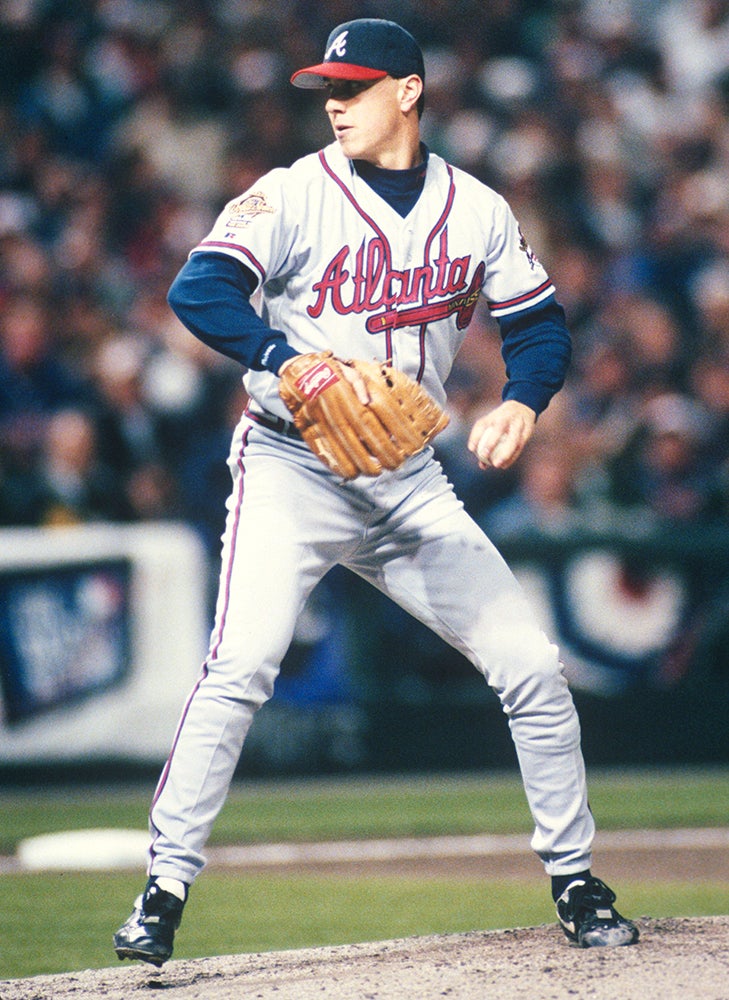
In the Fall Classic, Cleveland manager Mike Hargrove again turned to Hill in Game 4 – with the Indians once again trailing the series 2-games-to-1. But this time, the Braves’ Steve Avery outdueled Hill. With the game scoreless in the top of the sixth, Ryan Klesko gave Atlanta a 1-0 lead with a solo homer to right field. Cleveland tied the game in the bottom of the sixth on an Albert Belle home run but Hill permitted a one-out walk to his old teammate, Grissom, in the seventh. Luis Polonia followed with a double to score Grissom, bringing on Paul Assenmacher, who intentionally walked Chipper Jones before striking out Fred McGriff. But David Justice singled to center to score Polonia and Jones to make the score 4-1, and Atlanta went on to win 5-2.
Hill was charged with three runs over 6.1 innings.
“Kenny was throwing the ball well, his pitch count was low and he was strong,” Hargrove told the Mansfield (Ohio) News Journal. “There was no reason to believe he couldn’t get through the (seventh) inning.”
The Indians stayed alive in the series by beating Maddux in Game 5. But in Game 6, Tom Glavine pitched eight shutout innings as Atlanta won 1-0 on a David Justice home run. Hill faced one batter in relief in Game 6, allowing a leadoff single to Grissom in the seventh. Alan Embree relieved Hill and permitted no further damage, but the Braves already had their 1-0 lead that would stand up for the rest of the game.
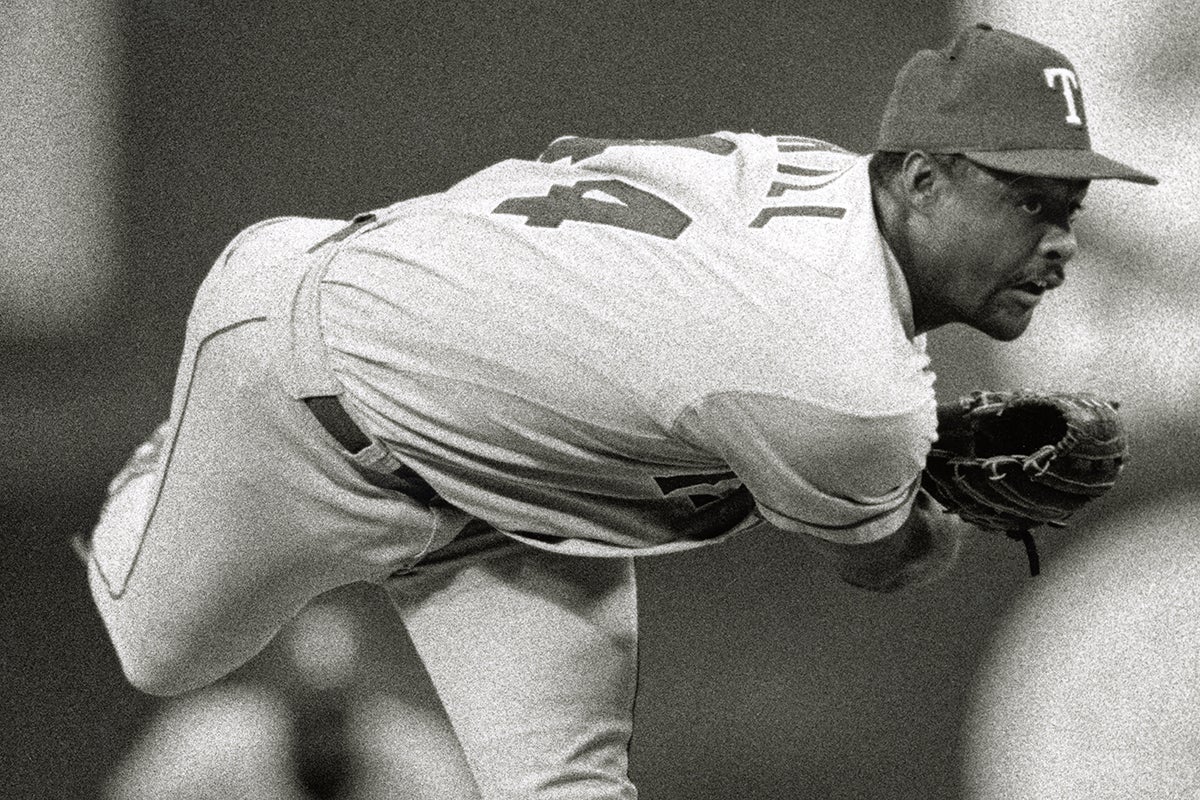
A free agent following the World Series, Hill signed a two-year deal with the Rangers on Dec. 21 worth a reported $8.15 million with a mutual option for a third season. The deal was consummated quickly when Kenny Rogers turned down a reported four-year offer to remain with the Rangers and Hill’s agent, Larry Reynolds, contacted Texas general manager Doug Melvin to tell him that Hill was interested in coming to the Lone Star State.
“I wanted to play in Texas, and they wanted to have me,” Hill told the Fort Worth Star-Telegram. “I liked what I saw in the city and (The Ballpark in Arlington).”
Hill turned in an outstanding effort in 1996, going 16-10 with a 3.63 ERA and a big league-best three shutouts while setting career highs in innings (250.2) and strikeouts (170). He was the ace of a Rangers staff that led Texas to its first-ever postseason berth and started Game 2 of the ALDS vs. the Yankees, allowing three runs over six innings while drawing a no-decision in a game the Rangers lost 5-4 in 12 innings. The Yankees won the series in four games, denying Hill a chance at another deep postseason run.
Hill battled shoulder problems early in the 1997 season and then was traded to the Angels on July 29 after Texas fell out of the pennant race. The Angels gave up catcher Jim Leyritz and a player to be named (later identified as Rob Sasser) but were happy to add Hill to their rotation.
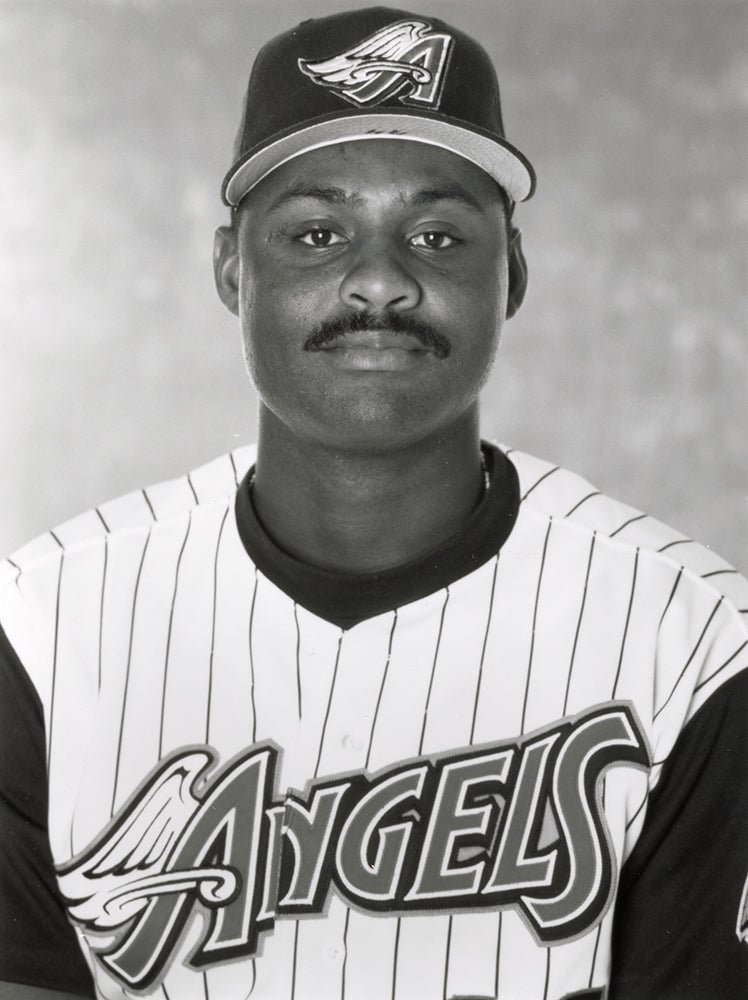
“We’ve got ourselves a guy who is as quality a guy as there is out there,” Angels manager Terry Collins told the Los Angeles Times. “He’s been the No. 1 guy on three of the last four teams he’s been on.”
Hill went 4-4 with a 3.65 ERA in 12 starts for the Angels, finishing the season with a combined 9-12 record and 4.55 ERA. Hill turned down his mutual option worth $4.6 million but re-signed with the Angels as a free agent, agreeing to a three-year deal worth $16.05 million. He was 6-1 in early May when a right thigh nerve issue slowed him down. Then in June, Hill underwent arthroscopic surgery to remove bone spurs from his right elbow. He returned to the rotation late in the year and finished with a 9-6 record in 19 starts.
The 1999 campaign would see Hill go 4-11 with a 4.77 ERA with as many walks as strikeouts (76). Then in May of 2000, Hill suffered a pulled rib cage muscle that sidelined him for almost two months. He had a 5-7 record and 6.52 ERA in 16 starts when the Angels released him on Aug. 7. He signed with the White Sox 11 days later but made just two appearances before being released again on Aug. 29.
Hill signed with Tampa in 2001 and made five appearances out of the bullpen before again being released. He pitched in the minors with the Reds and Red Sox during the rest of the season but never made it back to the big leagues, ending his career with a 117-109 record and 4.06 ERA over 1,973 innings.
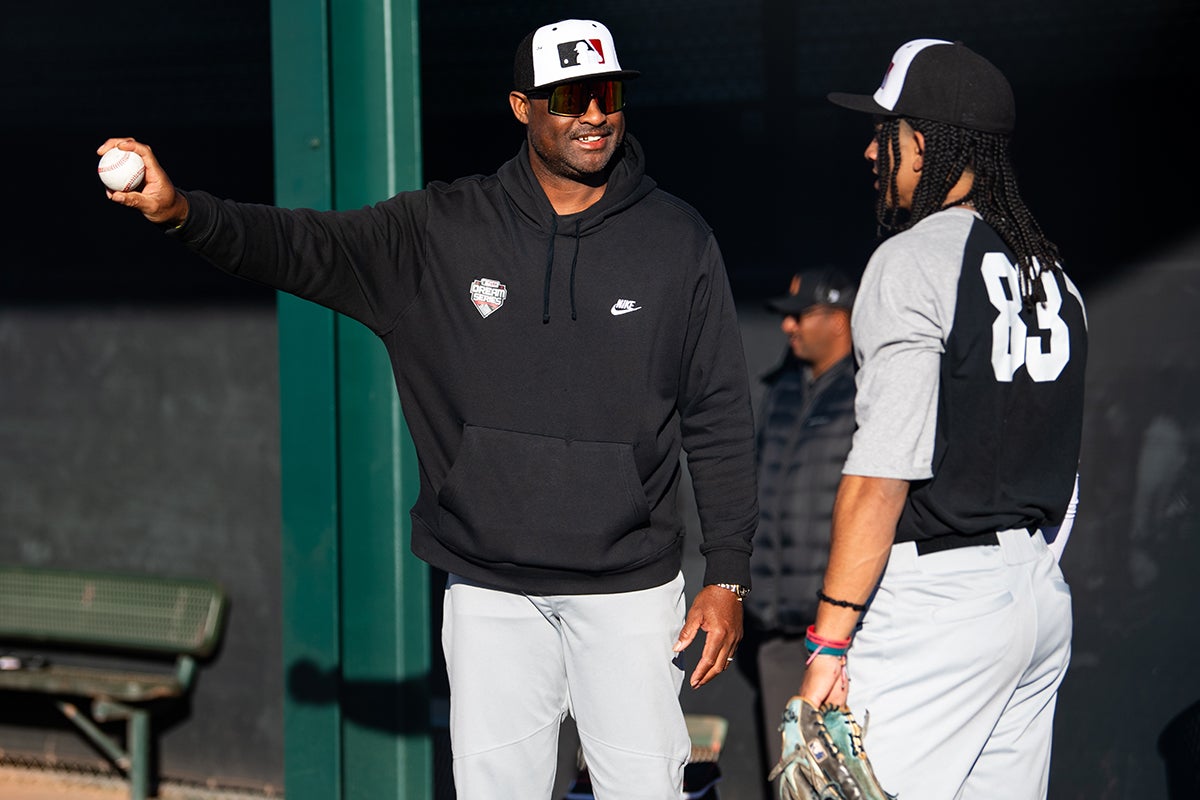
Hill’s son, Kenny Hill, became a highly recruited quarterback prospect out of Southlake, Texas, enrolled at Texas A&M University and served as the backup to Johnny Manziel – the reigning Heisman Trophy winner – during the 2013 season as a true freshman. Hill was the starter for the Aggies in 2014 before transferring to Texas Christian University, starring for the Horned Frogs in 2016 and 2017 (after – by the rules governing transfers at the time – being forced to sit out the 2015 season).
For Ken Hill Sr., it was another family athletic success story in a career that started as an undrafted free agent out of North Adams State College.
“He’s a workhorse and a real competitor,” Felipe Alou told the Post-Dispatch at the peak of Hill’s career. “He’s a great guy. As a manager and a teammate, you like to have someone like Ken around.”
Craig Muder is the director of communications for the National Baseball Hall of Fame and Museum
RELATED STORIES
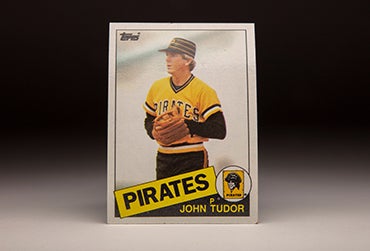
#CardCorner: 1985 Topps John Tudor
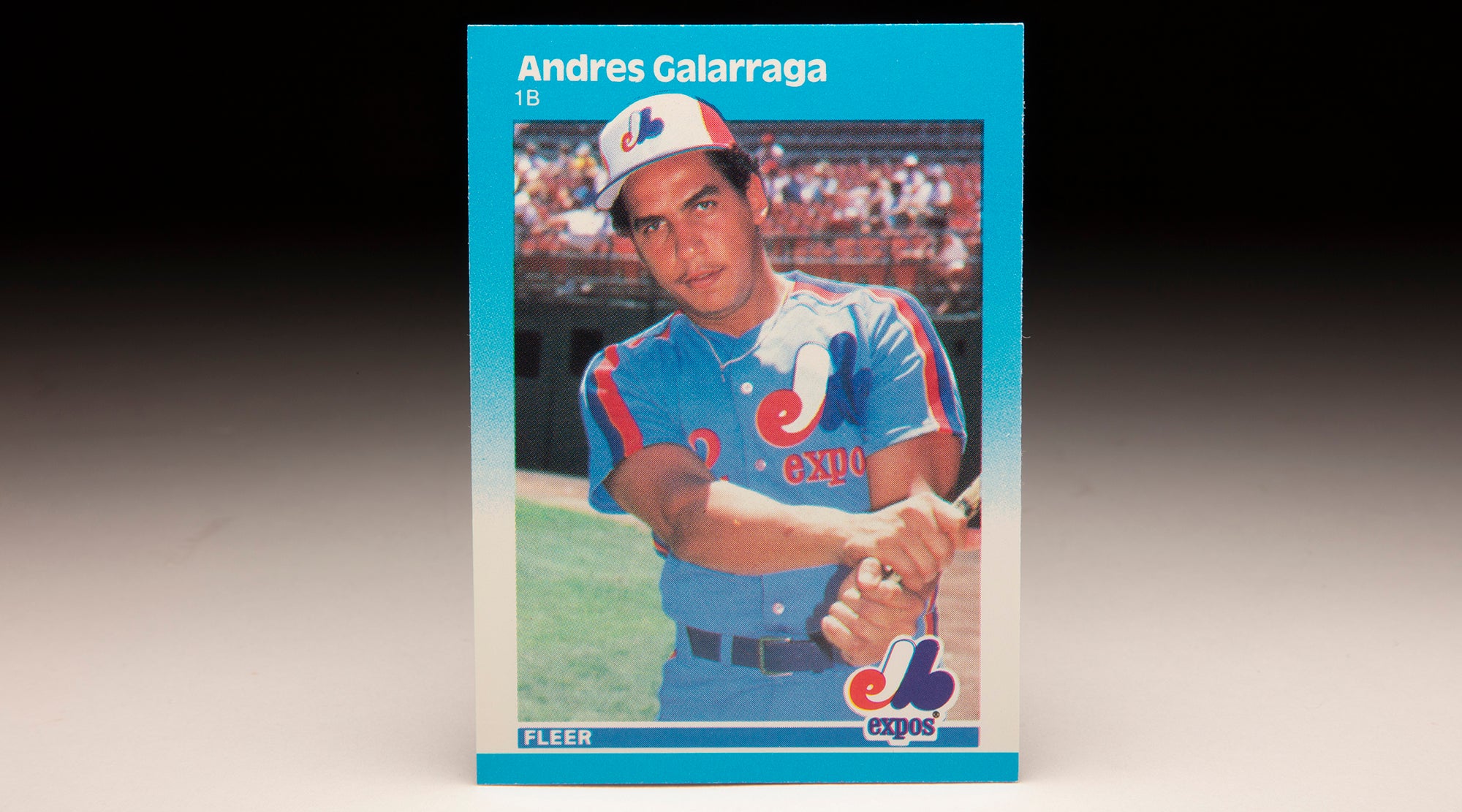
#CardCorner: 1987 Fleer Andrés Galarraga
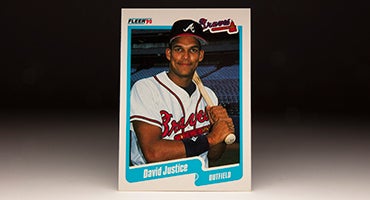
#CardCorner: 1990 Fleer David Justice
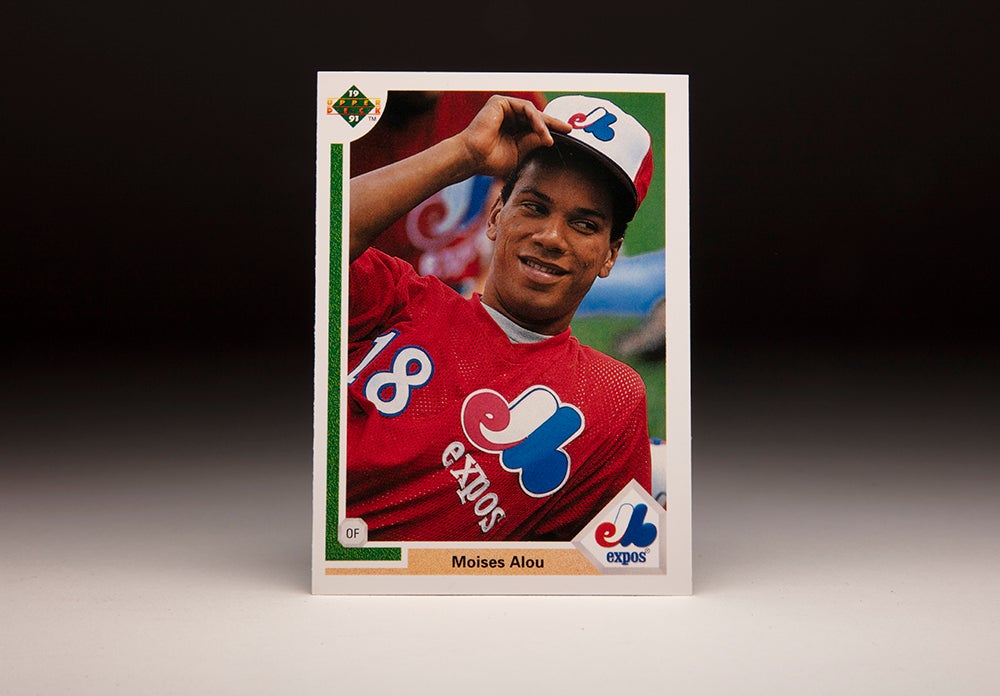
#CardCorner: 1991 Upper Deck Moises Alou
RELATED STORIES

#CardCorner: 1985 Topps John Tudor

#CardCorner: 1987 Fleer Andrés Galarraga

#CardCorner: 1990 Fleer David Justice

